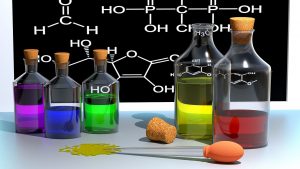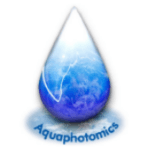Water molecular conformations, for example water dimers, trimers, solvation shells, etc., are known to contribute very specifically to its spectrum (Smith et al. 2005; Robertson et al. 2003; Weber et al. 2000; Franks 1973). The water spectrum is very sensitive to water molecular configurations, hydrogen bonding and charges of the solvated and solvent molecules or clusters. Big data sets of water spectra acquired under various perturbations reveal immense information about water molecular system dynamics and its functionality.
NIR spectrum of the solvent (i.e. water) has been found to contain significant information about its solutes (Tsenkova 2009).
In previous research, protein solutions (Murayama et al. 2000), biomolecular water solutions (Murayama et al. 2000; Tsenkova et al. 2004), suspensions of small particles in water and various biological systems such as cells, plants, animal body fluids and tissues have been analyzed with NIR (Tsenkova 2009, 2010; Tsenkova et al. 2001, 2004; Jinendra 2010; Jinendra et al. 2010; Kinoshita et al. 2012; Matija et al. 2012; Nakakimura et al. 2012).
In these studies, well known water absorbance bands have been observed under various perturbations (i.e. concentrations of solutes (Nakakimura et al. 2012), nano particles (Matija et al. 2012; Tsenkova et al. 2007a), molecules which don’t absorb (Tsenkova et al. 2007a; Gowen et al. 2013) in the NIR range, temperature (Segtnan et al. 2001; Maeda et al. 1995), light illumination, etc.). Dynamic spectra have been acquired and analyzed with multivariate methods. As a result, numerous water absorbance bands have been identified. Many of these bands are in a good agreement with previously reported or calculated overtones of already published water bands in the IR region (Smith et al. 2005; Weber et al. 2000). Some of them have been newly discovered (Tsenkova 2009).
Water has been perturbed with lactose, human serum albumin (HSA) (Murayama et al. 2000), different isomers of prion protein (PrP) (Tsenkova et al. 2004), NaCl (Gowen et al. 2013), metals (Putra et al. 2010; Tsenkova et al. 2007b) and other solutes at various concentrations. The most prominent wavelengths with highest variations caused by the used perturbations were identified in the spectra through multivariate analysis. It has been found that they are predominantly water absorbance bands. Contrary to the common understanding of overtone spectroscopy (100 to 1000 times lower absorbance than in the mid-IR range), it has been shown that even very small concentrations (at ppb level) (Tsenkova et al. 2004; Gowen et al. 2013) of the solute could be measured with NIR.

Measuring low concentrations of polystyrene particles in water is a good example. When the first overtone of water absorbance region at 1300–1600 nm was used to develop a model for low concentration (1 %–0.0001%) measurement of polystyrene particles (Tsenkova et al. 2007a), spectral measurements achieved high accuracy over a wide region of low concentrations. In contrary, with decreasing the concentration, accuracy decreased substantially when only the polystyrene overtone band at 1680 nm was used. Similar findings have been reported for proteins in solution (Murayama et al. 2000), metals in solution (Putra et al. 2010), etc.
Another study has even shown that NIR spectral models for metal concentration measurement (ppb range) in diluted samples are influenced by the method of dilution (serial or direct dilution) (Putra et al. 2010; Tsenkova et al. 2007b). These findings led to the conclusion that the NIR water spectral pattern describes the water matrix in relation to the rest of the molecules in solution in great details.
